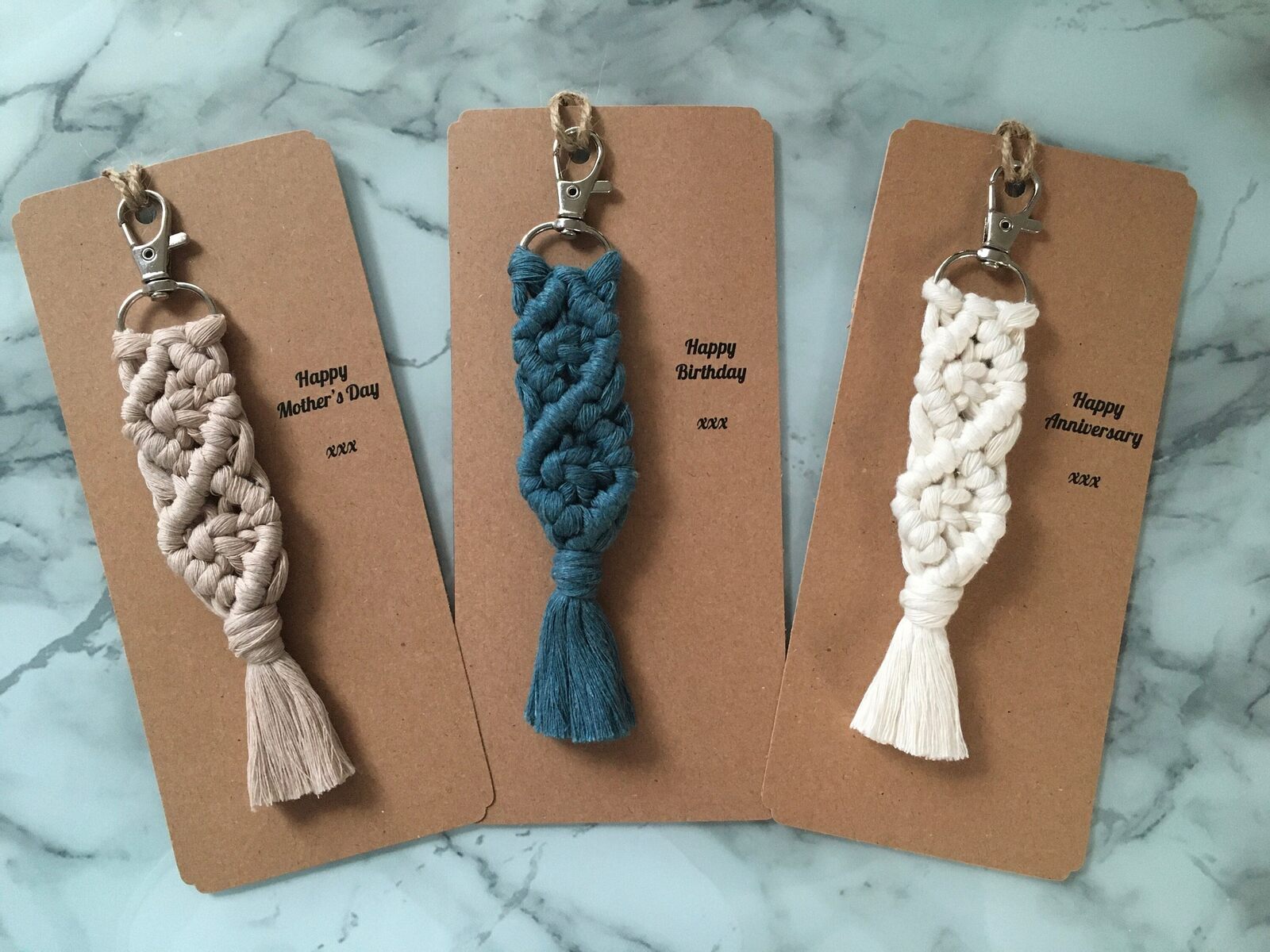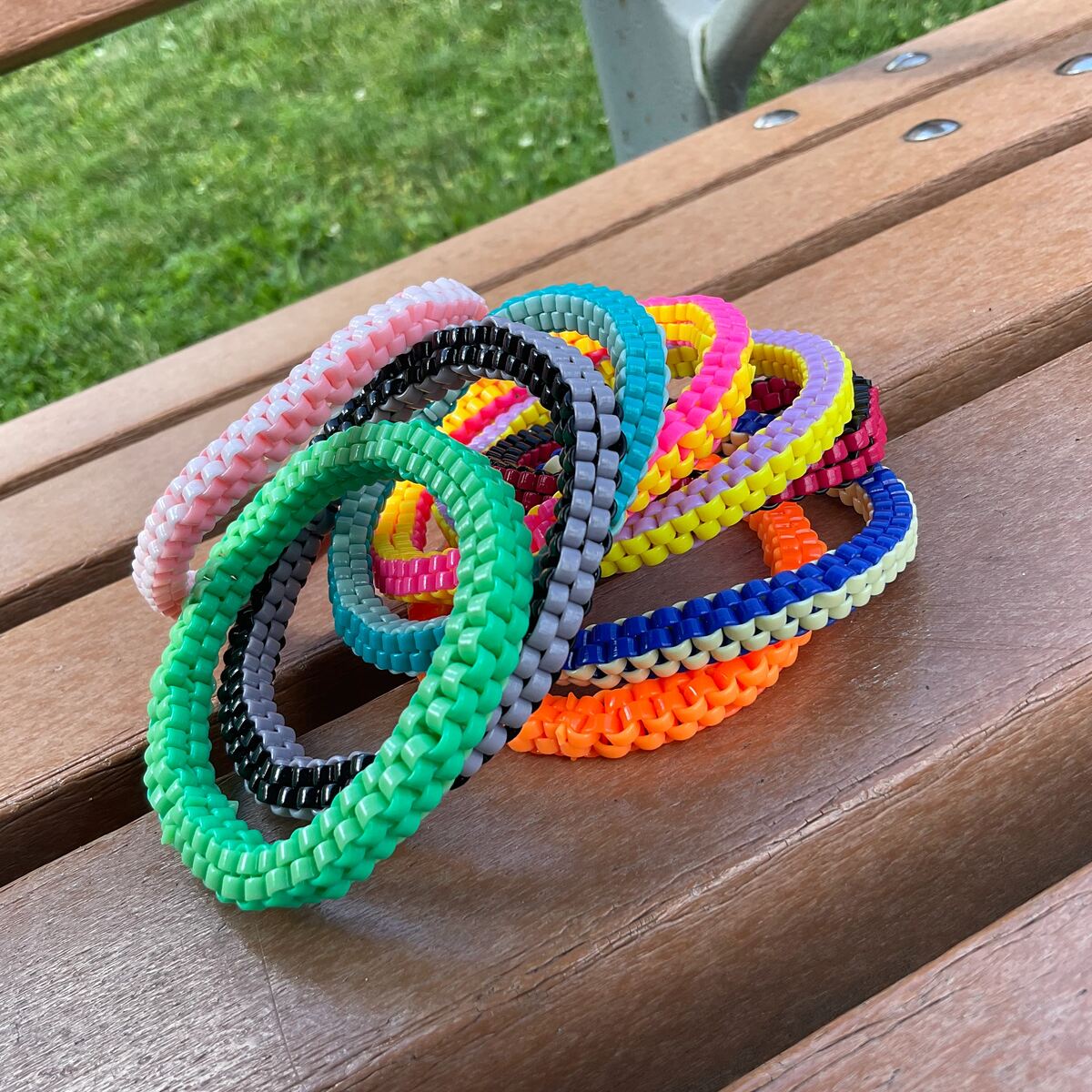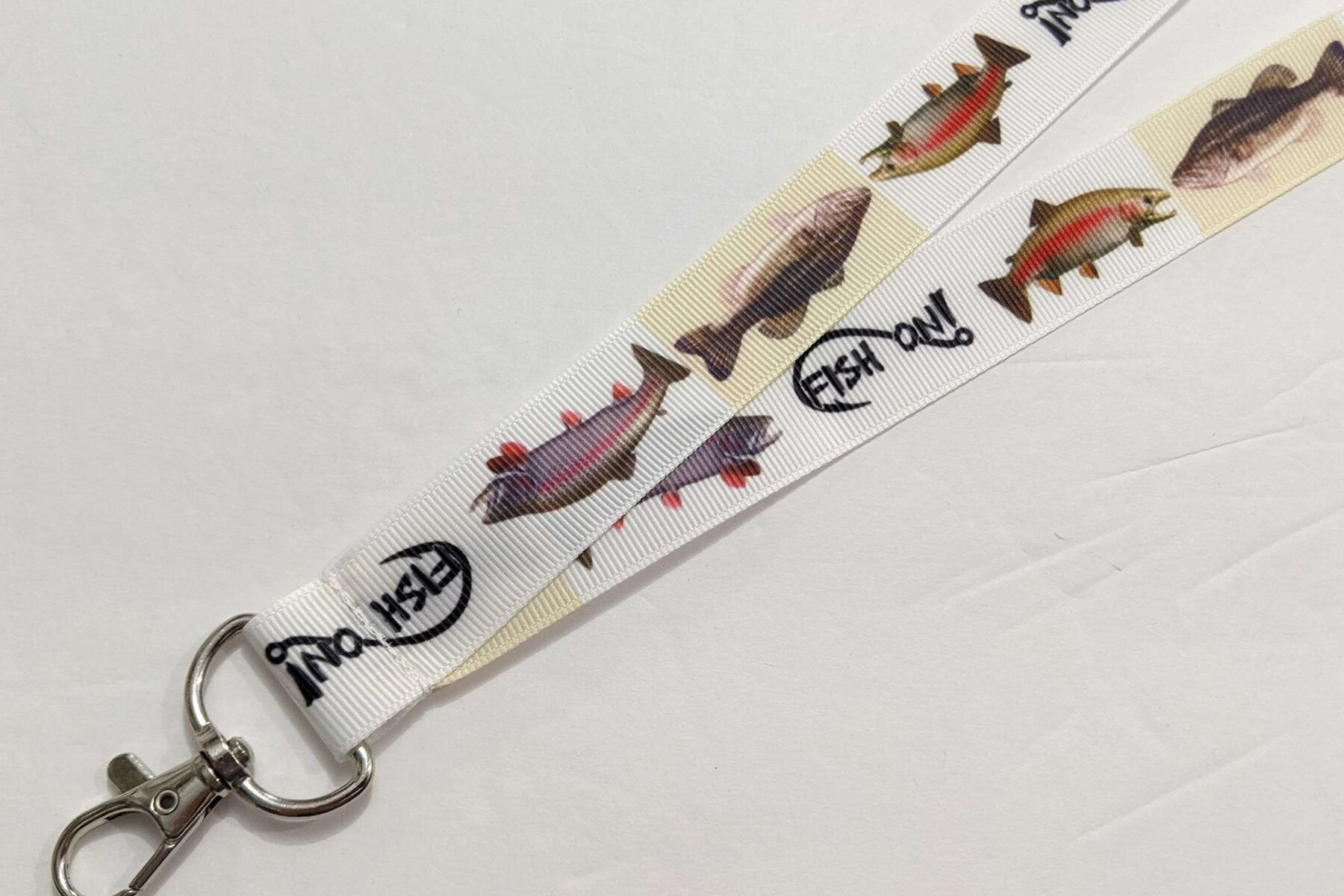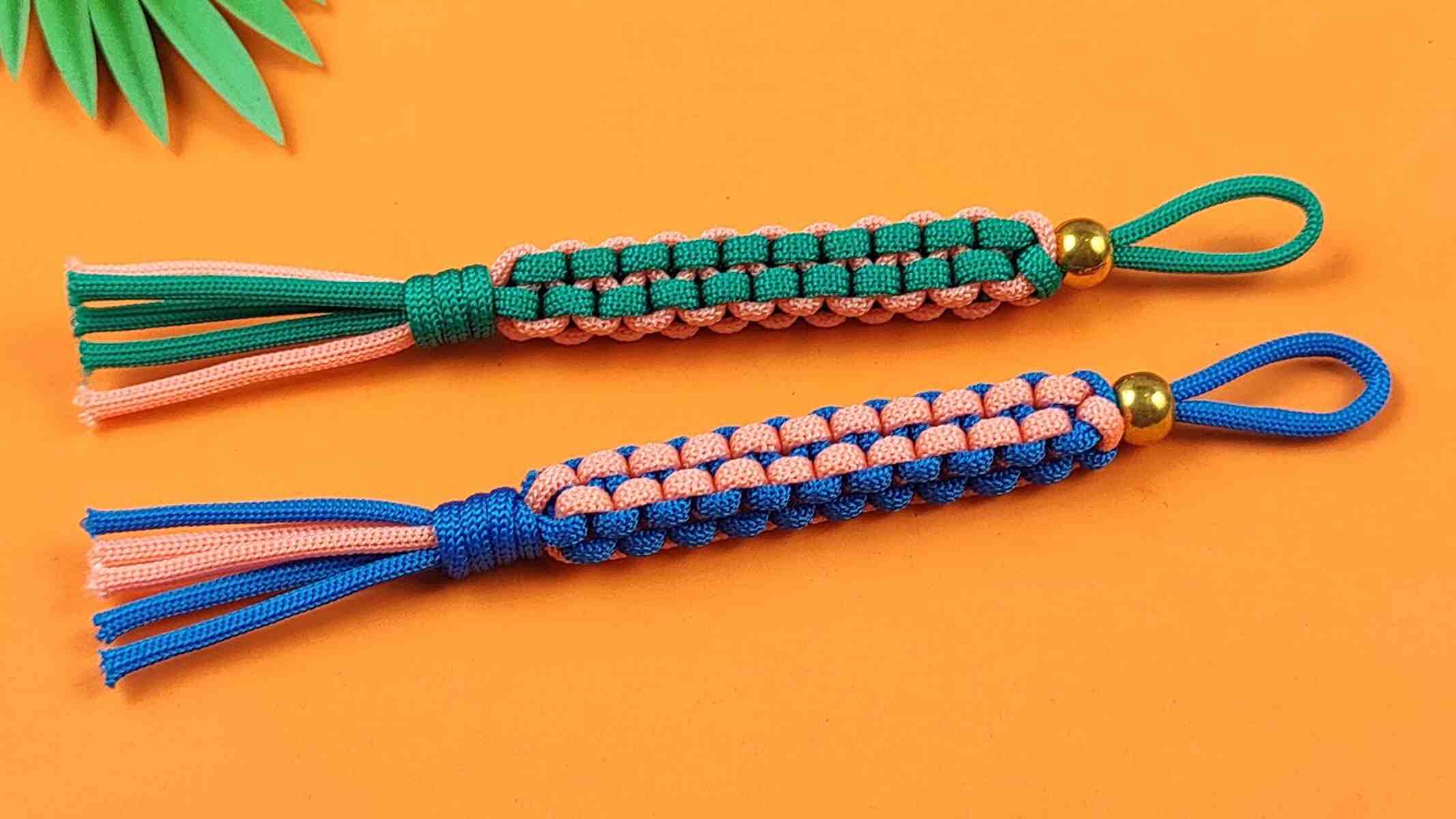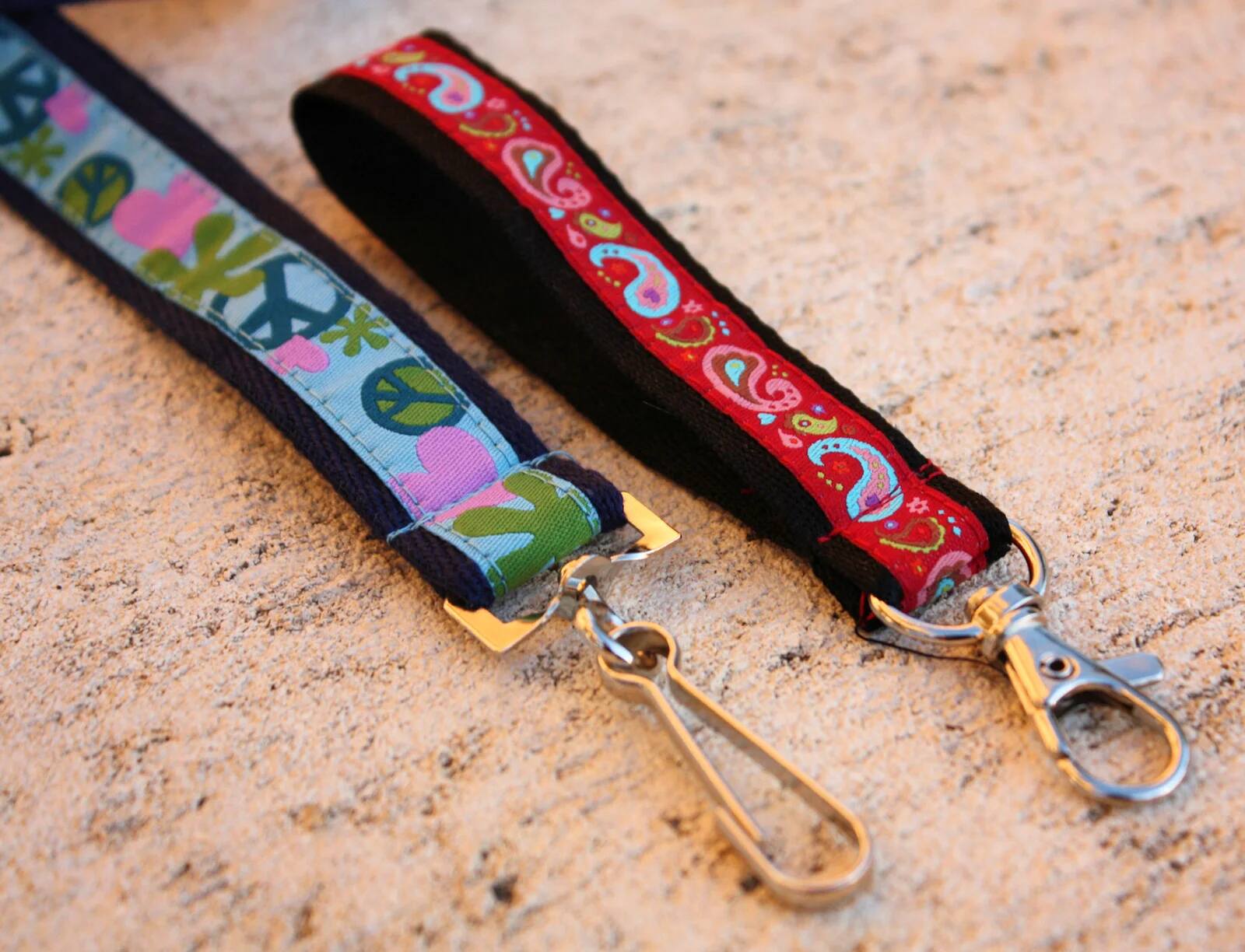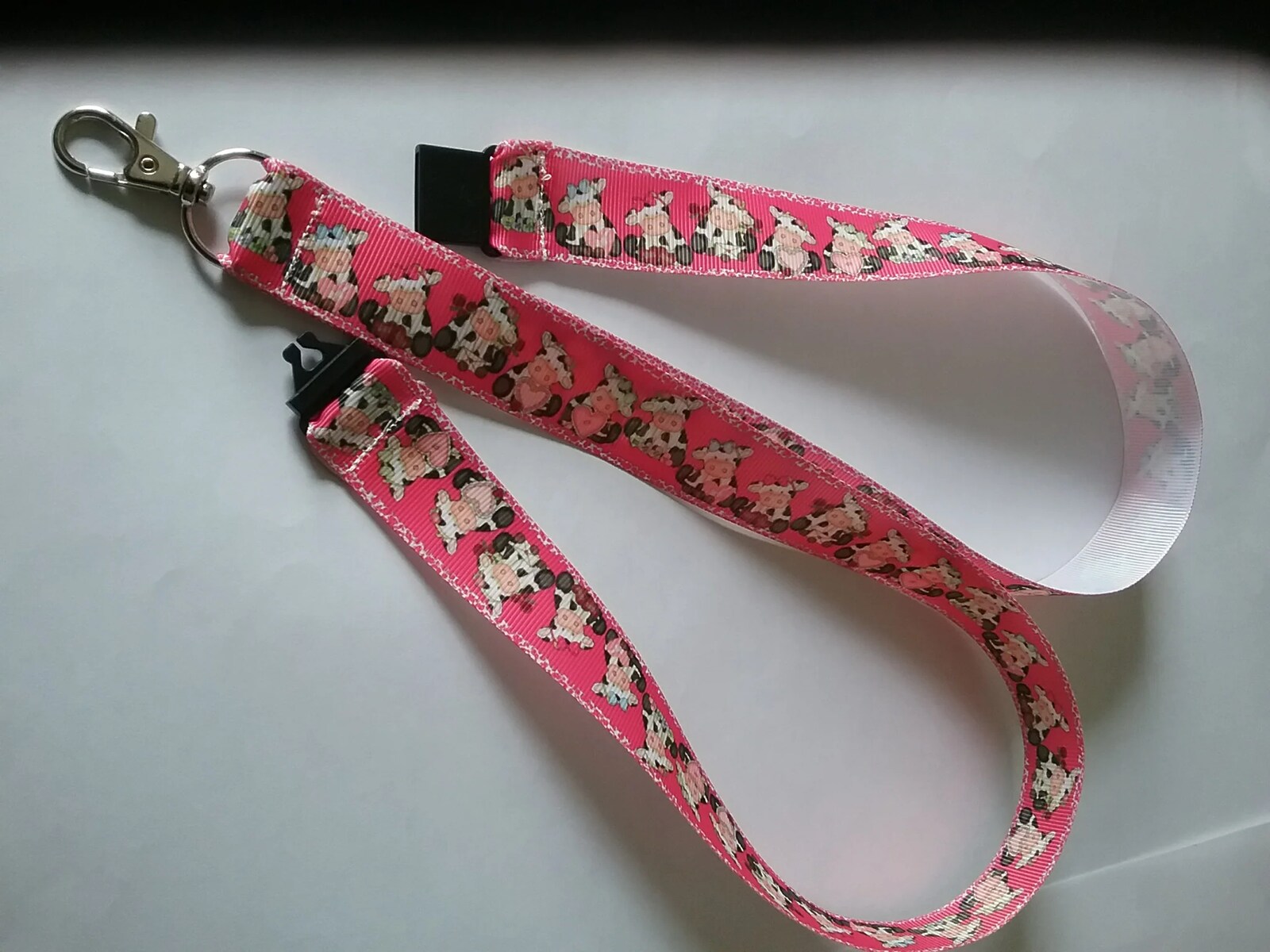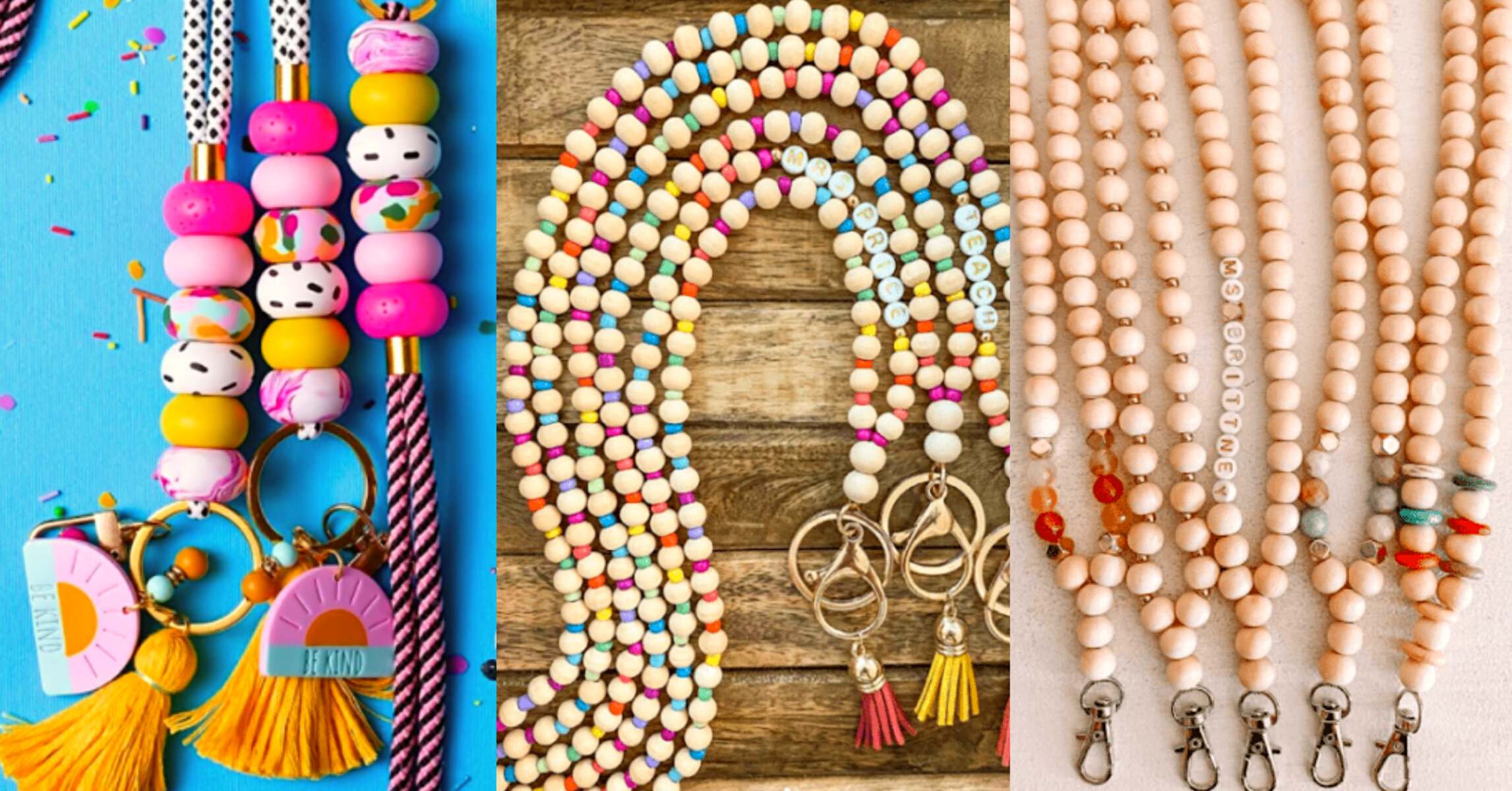Introduction
Lanyards are more than just practical accessories; they are a form of self-expression and creativity. Whether used to hold identification badges, keys, or as a fashion statement, lanyards have evolved into personalized works of art. One of the most popular ways to craft unique lanyards is by utilizing boondoggle techniques.
Boondoggle, also known as gimp or rexlace, is a type of plastic lacing material that is woven, knotted, and braided to create intricate patterns. It offers a wide range of vibrant colors and is exceptionally durable, making it an ideal choice for lanyard crafting. The art of boondoggle techniques allows for endless customization, enabling individuals to showcase their personality and style through their creations.
In this comprehensive guide, we will delve into the world of boondoggle lanyard crafting, exploring the various techniques, materials, patterns, and embellishments that can be used to produce one-of-a-kind lanyards. Whether you are a beginner looking to learn the basics or an experienced crafter seeking to expand your skills, this guide will provide valuable insights and inspiration for your lanyard crafting endeavors. So, grab your boondoggle materials and let's embark on a creative journey to master the art of crafting unique lanyards!
Understanding Boondoggle Techniques
Boondoggle techniques encompass a variety of weaving, braiding, and knotting methods that are used to create intricate and visually appealing lanyards. These techniques are often employed with boondoggle lacing, a flat and flexible plastic material that comes in an array of vibrant colors. Boondoggle lacing, also known as gimp or rexlace, is highly versatile and can be manipulated to form an assortment of patterns and designs.
Weaving
Weaving is a fundamental boondoggle technique that involves intertwining strands of boondoggle lacing to form a cohesive and structured lanyard. The weaving process typically employs a series of over-under movements, resulting in a tightly woven pattern. Weaving techniques can range from simple to complex, allowing crafters to experiment with different textures and visual effects.
Braiding
Braiding with boondoggle lacing entails intertwining multiple strands to produce a plaited lanyard. This technique often involves dividing the lacing into sections and crossing them over one another in a systematic manner. By varying the number of strands and the braiding pattern, crafters can create lanyards with distinct textures and thicknesses.
Knotting
Knotting is a crucial boondoggle technique that adds decorative elements and structural integrity to lanyards. Common knotting methods include the square knot, spiral stitch, and cobra stitch, each contributing to the overall aesthetic and strength of the lanyard. Knotting techniques allow for the incorporation of beads, charms, and other embellishments, further enhancing the lanyard's visual appeal.
Twisting
Twisting involves spiraling strands of boondoggle lacing around a central axis to form a helical pattern. This technique adds a dynamic and three-dimensional element to lanyards, creating an eye-catching effect. Twisting can be combined with other techniques to produce intricate and ornate designs.
Layering
Layering is a technique that involves stacking multiple strands of boondoggle lacing to create a multi-dimensional lanyard. By strategically arranging and securing the layers, crafters can achieve a layered effect that adds depth and complexity to the lanyard design.
Mastering these boondoggle techniques opens up a world of creative possibilities, allowing crafters to experiment with different patterns, textures, and embellishments to craft truly unique lanyards. Whether weaving, braiding, knotting, twisting, or layering, each technique contributes to the artistry and individuality of boondoggle lanyard crafting.
Choosing the Right Materials
Selecting the appropriate materials is paramount in the creation of boondoggle lanyards. The choice of lacing material, beads, and embellishments significantly influences the overall aesthetic and durability of the lanyard. Here's a comprehensive guide to choosing the right materials for your boondoggle lanyard crafting endeavors.
Boondoggle Lacing
Boondoggle lacing, also known as gimp or rexlace, is the primary material used in crafting lanyards. When selecting boondoggle lacing, consider factors such as color, width, and flexibility. Opt for vibrant and complementary colors that align with your design vision. Additionally, choose a width that suits the desired thickness of the lanyard and ensures ease of manipulation during crafting. Flexibility is crucial for intricate weaving and braiding techniques, so select lacing that offers both durability and pliability.
Beads and Charms
Incorporating beads and charms into your lanyard design can add a touch of elegance and personalization. When choosing beads, consider their size, shape, and color. Select beads that complement the boondoggle lacing and contribute to the overall aesthetic of the lanyard. Charms, such as miniature pendants or decorative trinkets, can be chosen to reflect personal interests or themes. Ensure that the beads and charms are compatible with the lacing material and can be seamlessly integrated into the design.
Fastening Accessories
Fastening accessories, such as clasps, key rings, and badge holders, are essential for the functionality of the lanyard. When selecting these components, prioritize durability and ease of use. Opt for sturdy clasps that securely attach to the lanyard and provide a reliable means of fastening. Key rings should be robust and resistant to deformation, while badge holders should offer a secure grip for holding identification cards or keys.
Embellishments
Embellishments, such as ribbons, sequins, and decorative threads, can enhance the visual appeal of the lanyard. When choosing embellishments, ensure that they complement the color palette and style of the lanyard. Select embellishments that can be seamlessly integrated into the weaving or braiding process, adding depth and texture to the design.
By carefully selecting high-quality materials that align with your design vision, you can elevate the craftsmanship of your boondoggle lanyards, resulting in stunning and durable creations that reflect your creativity and style.
Basic Boondoggle Lanyard Patterns
Basic boondoggle lanyard patterns serve as an excellent starting point for individuals venturing into the art of lanyard crafting. These foundational patterns lay the groundwork for mastering essential weaving and braiding techniques while allowing crafters to create visually appealing and functional lanyards. Here are some popular basic boondoggle lanyard patterns that serve as building blocks for crafting unique and personalized lanyards:
1. Box Stitch
The box stitch, also known as the square stitch, is a fundamental pattern that forms a structured and symmetrical lanyard. It involves weaving strands of boondoggle lacing in a crosswise manner, resulting in a series of interconnected square shapes. The box stitch provides a sturdy and uniform foundation for lanyards, making it an ideal choice for beginners seeking to hone their weaving skills.
2. Cobra Stitch
The cobra stitch, characterized by its interwoven and spiraling design, adds a touch of intricacy to boondoggle lanyards. This pattern involves knotting and braiding techniques to create a distinctive and visually striking lanyard. The cobra stitch is versatile and can be embellished with beads or charms, allowing for personalized variations that reflect individual style preferences.
3. Zipper Stitch
The zipper stitch pattern mimics the appearance of a zipper, featuring a series of parallel strands that create a sleek and streamlined lanyard design. This pattern is achieved through a combination of weaving and twisting techniques, resulting in a visually dynamic lanyard with a modern aesthetic. The zipper stitch pattern is popular among crafters looking to create lanyards with a contemporary and polished look.
4. Corkscrew Stitch
The corkscrew stitch pattern introduces a playful and whimsical element to boondoggle lanyards. This pattern involves twisting and braiding techniques to create a spiraling and coiled design that resembles a corkscrew. The corkscrew stitch adds a dynamic and three-dimensional aspect to lanyards, making it an engaging choice for those seeking to infuse creativity and movement into their designs.
Mastering these basic boondoggle lanyard patterns provides a solid foundation for exploring more intricate and advanced techniques. By familiarizing themselves with these fundamental patterns, crafters can gain confidence in their lanyard crafting abilities and begin to experiment with personalized variations and embellishments. These patterns serve as gateways to unleashing creativity and showcasing individuality through the art of boondoggle lanyard crafting.
Advanced Boondoggle Lanyard Patterns
As lanyard crafting skills progress, crafters often seek to explore more complex and visually captivating patterns to elevate their creations. Advanced boondoggle lanyard patterns offer a platform for honing intricate weaving, braiding, and knotting techniques, allowing crafters to produce stunning and elaborate lanyards that showcase their expertise and creativity.
1. Diamond Braid
The diamond braid pattern is characterized by its interlacing strands that form a series of diamond-shaped motifs along the length of the lanyard. This advanced pattern requires meticulous attention to detail and precision in braiding, resulting in a lanyard with a striking geometric design. Crafters can experiment with color combinations to accentuate the diamond motifs, adding depth and visual interest to the lanyard.
2. Fishtail Braid
The fishtail braid pattern introduces a sophisticated and intricate weaving technique that creates a visually captivating lanyard reminiscent of a fishtail braid hairstyle. This advanced pattern involves weaving strands in a diagonal and overlapping manner, resulting in a textured and elegant lanyard design. Crafters can incorporate multiple colors to enhance the fishtail braid's intricate appearance, adding a touch of sophistication to their lanyard creations.
3. Celtic Knot
The Celtic knot pattern is a symbol of interconnectedness and eternity, making it a popular choice for crafting intricate and symbolic lanyards. This advanced pattern involves knotting and weaving techniques to create elaborate and interconnected motifs that evoke the timeless beauty of Celtic art. Crafters can experiment with different knotting sequences and symmetrical arrangements to produce lanyards with mesmerizing Celtic knot designs, reflecting a blend of tradition and creativity.
4. Double Helix Twist
The double helix twist pattern introduces a dynamic and visually captivating lanyard design that emulates the structure of a double helix DNA strand. This advanced pattern involves intertwining strands in a helical fashion, creating a mesmerizing and three-dimensional lanyard. Crafters can explore color variations and gradient effects to accentuate the double helix twist, resulting in lanyards that showcase a fusion of scientific inspiration and artistic ingenuity.
By delving into these advanced boondoggle lanyard patterns, crafters can expand their repertoire of techniques and embark on a creative journey that challenges their skills and imagination. These intricate patterns offer a canvas for expressing individuality and craftsmanship, allowing crafters to produce lanyards that are not only visually stunning but also reflective of their dedication to mastering the art of boondoggle lanyard crafting.
Adding Unique Embellishments
Incorporating unique embellishments into boondoggle lanyard designs serves as a creative opportunity to infuse personality and individuality into the crafted pieces. From beads and charms to ribbons and decorative threads, the addition of embellishments elevates the visual appeal and distinctiveness of lanyards, transforming them into personalized works of art.
Beads and Charms
Beads and charms are versatile embellishments that offer a myriad of design possibilities for boondoggle lanyards. Crafters can select beads in various shapes, sizes, and colors to complement the lacing material and create eye-catching accents. Whether opting for sleek and metallic beads for a modern aesthetic or vibrant and whimsical beads for a playful touch, the careful selection of beads allows for the customization of lanyards to suit individual preferences and styles.
Charms, such as miniature pendants, trinkets, or symbolic tokens, provide an avenue for personal expression within lanyard designs. Crafters can choose charms that hold sentimental value or reflect specific interests, effectively infusing the lanyards with meaningful symbolism. By strategically placing charms along the lanyard or incorporating them into knotting patterns, crafters can create lanyards that resonate with personal significance and serve as expressive accessories.
Ribbons and Decorative Threads
Integrating ribbons and decorative threads into boondoggle lanyard designs introduces texture, color, and dimension. Ribbons in complementary or contrasting hues can be woven alongside the boondoggle lacing, adding a soft and tactile element to the lanyard. The incorporation of ribbons allows for the creation of multi-textured lanyards that exude elegance and intricacy.
Decorative threads, such as metallic, glitter, or variegated threads, offer a means of embellishing lanyards with shimmering and ornate details. Crafters can weave decorative threads into braiding patterns or use them for intricate knotting, resulting in lanyards that sparkle and catch the light. The addition of decorative threads imparts a touch of opulence and refinement to lanyard designs, making them visually captivating and distinctive.
By thoughtfully incorporating beads, charms, ribbons, and decorative threads, crafters can transform boondoggle lanyards into personalized accessories that reflect their creativity and individuality. These unique embellishments not only enhance the aesthetic appeal of lanyards but also imbue them with personal meaning, making them meaningful and cherished adornments for everyday use.
Tips for Creating Customized Lanyards
-
Explore Color Combinations: Experiment with different color combinations to create visually appealing lanyards. Consider contrasting or complementary colors to achieve striking designs that reflect your personal style.
-
Incorporate Personal Elements: Infuse your lanyards with personal elements such as initials, favorite colors, or themed charms. Adding personal touches makes the lanyards uniquely yours and allows you to express your individuality.
-
Practice Patience and Precision: Lanyard crafting requires patience and precision, especially when working with intricate patterns. Take your time to ensure each weave, braid, or knot is executed with care, resulting in a polished and professional-looking lanyard.
-
Customize Length and Width: Tailor the length and width of your lanyards to suit their intended use. Whether it's for holding keys, ID badges, or as a decorative accessory, customizing the dimensions ensures functionality and comfort.
-
Embrace Creative Embellishments: Don't shy away from experimenting with unique embellishments such as feathers, leather accents, or fabric inserts. These creative additions can add a touch of flair and individuality to your lanyard designs.
-
Seek Inspiration: Draw inspiration from various sources such as nature, art, or cultural motifs. Incorporating elements inspired by your surroundings can infuse your lanyards with creativity and symbolism.
-
Pay Attention to Detail: Focus on the finer details of your lanyard, ensuring that knots are secure, weaves are uniform, and embellishments are thoughtfully integrated. Attention to detail elevates the overall quality of your customized lanyards.
-
Share and Collaborate: Engage with fellow lanyard crafters to exchange ideas and techniques. Collaborating with others can spark creativity and introduce new perspectives to your lanyard crafting endeavors.
By applying these tips, you can create customized lanyards that not only serve practical purposes but also serve as unique expressions of your creativity and personality.
Conclusion
In conclusion, the art of crafting unique lanyards using boondoggle techniques offers a boundless avenue for self-expression, creativity, and personalization. Through the mastery of weaving, braiding, knotting, and embellishing, individuals can transform simple lacing material into intricate and visually captivating lanyards that reflect their individuality and craftsmanship.
Boondoggle lanyard crafting is not merely a hobby; it is a form of artistry that allows individuals to infuse their personality and style into practical accessories. The journey of creating boondoggle lanyards is a testament to patience, precision, and creativity, as crafters meticulously weave, braid, and embellish their designs to achieve stunning and personalized results.
From basic patterns that lay the foundation for skill development to advanced patterns that challenge and inspire, the world of boondoggle lanyard crafting offers a spectrum of techniques for crafters to explore and master. The incorporation of unique embellishments, such as beads, charms, ribbons, and decorative threads, adds a touch of elegance and individuality to lanyards, making them more than just functional accessories.
Furthermore, the customization of lanyards, including the exploration of color combinations, incorporation of personal elements, and attention to detail, allows crafters to create pieces that resonate with their preferences and interests. Each lanyard becomes a canvas for self-expression, reflecting the creativity and dedication of its creator.
As crafters embark on their lanyard crafting journey, they are encouraged to seek inspiration, collaborate with fellow enthusiasts, and embrace the endless possibilities that boondoggle techniques offer. Whether crafting lanyards for personal use, gifting them to friends and loved ones, or even selling them as handmade creations, the art of boondoggle lanyard crafting holds the potential to bring joy, creativity, and a sense of accomplishment.
In essence, the art of crafting unique lanyards with boondoggle techniques transcends the realm of mere crafting; it is a form of storytelling, self-expression, and artisanship. Each lanyard crafted is a testament to the passion and creativity of its maker, serving as a tangible symbol of individuality and skill. The journey of lanyard crafting is an ongoing exploration of creativity and self-discovery, and the resulting pieces are not just accessories but reflections of the crafters' unique perspectives and artistic abilities.







